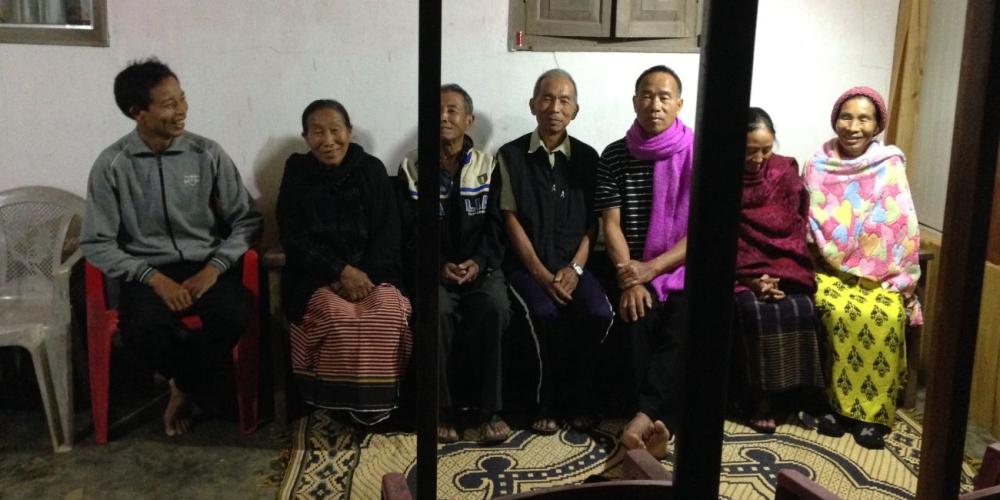Why an Indian Village Stopped Harassing Adventists
Two unusual incidents end five years of religious persecution.
A spate of unexpected injuries and deaths brought an abrupt end to five years of religious persecution for the first group of Seventh-day Adventists living in an isolated corner of India.
Six Sabbath-keeping families found themselves rejected by neighbors in the predominantly Christian village of Samziuram, located in Nagaland in northeastern India, after being baptized in 1970.
Villagers initially tried to force out the Adventists by making death threats and vandalizing their small church building. When that didn’t work, the villagers convinced the local authorities to arrest the Adventists briefly.
Tensions peaked in 1975 when a prominent villager, Gongthonrei Kamson, joined the Adventist Church. Without legal means to eject the Adventists, the villagers embarked on a campaign of harassment that falsely accused Kamson of practicing black magic, local church members said.
“They were afraid that his influence would cause the church to grow,” said Enoch Gonmei, a local church deacon, whose family was among the first Adventists in the village. “But they could not tell the Adventists to leave in the name of religion, so they made the accusation of sorcery.”
Several young people climbed atop Kamson’s house and shouted insults about Adventists and their faith, he said. Then they tore down the building and a nearby barn. Going out to the field, they harvested the man’s crops and took the produce home.
Then something odd happened. The young people who had participated in the harassment began to die. Several succumbed to illness. One started to bleed from the nose while traveling and collapsed.
“Those who destroyed the house and mocked the church and its members all died within a short period of time and without explanation,” said Amunang Gonmei, 77, a church deacon, retired farmer, and local Adventist pioneer.
A second unusual incident occurred that year.
One day, the village received notice that the military needed help moving supplies on an upcoming Saturday. It was customary for the military to seek assistance from villagers in carrying food rations and equipment.
The Adventists immediately appealed to the local authorities, saying Saturday was the biblical seventh-day Sabbath and they could not work. The authorities, however, were unsympathetic and had no intention of allowing the Adventists to take the day off, Gonmei said.
“Then suddenly the news came from the army officers that the workday had been changed from Saturday to Sunday,” Gonmei said.
The rescheduling caught the villagers by surprise, and many began to say to one another, “Maybe God answered the prayers of the Adventists,” Gonmei said.
Then tragedy struck during the Sunday workday. A bridge collapsed as the villagers were carrying across supplies, injuring several people. No Adventists were hurt.
“Those villagers had tried to make the Adventists break their Sabbath, but they ended up breaking their Sunday and maybe breaking their legs, too,” Gonmei said. “So they started thinking that God favors this group of people.”
The news spread across the region, and the harassment of the Adventists stopped.
Local church leaders are quick to underscore that they do not believe God has any role in causing death or suffering. But they said God undoubtedly protects and rewards those who are faithful to Him.
Today 30 percent of the village’s 1,500 residents belong to the Adventist Church, a result that local church members link to the remarkable events of the 1970s. The village’s first Adventist church celebrated its 50th anniversary in December 2016.
“God was always protecting the Seventh-day Adventists,” said G. Nageshwar Rao, communication director for the Adventist Church’s Southern Asia Division, whose territory includes India. He visited the village with an Adventist Mission worker. “Anyone who troubled them ended up being troubled themselves.”
Gonmei said he has no doubt that God blesses people who are faithful to Him.
“The church now bears a good name and the villagers respect it,” he said. “I hope that this joy of the Lord will continue to spread and bless the community.”
Read more about Samziuram village: “Indian Village Where 30% of Population Is Adventist”
A portion of the Thirteen Sabbath Offering for third quarter 2017 will go toward constructing a girls’ dormitory at Nagaland Adventist School in Dimapur, India. The 12-grade day school, which opened in 2007, plans to expand into a boarding school to attract more students. Although it also hopes to construct a boys’ dormitory one day, it has decided to start with a girls’ dormitory because of high demand from female students.
A total of $1.03 million from the Thirteenth Sabbath Offering will be earmarked for five projects in India in third quarter 2017. The other four projects include a new girls’ dormitory at James Memorial Higher Secondary School in Prakasapuram in southern India; 14 new classrooms for an Adventist school in Vellarada in southern India; 14 new classrooms for Alate Adventist school in Hathkanangle in western India; and the division’s first major conference center, situated in the central city of Ibrahimpatnam.





